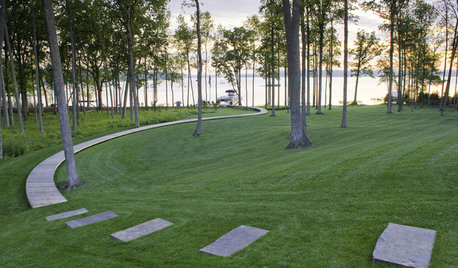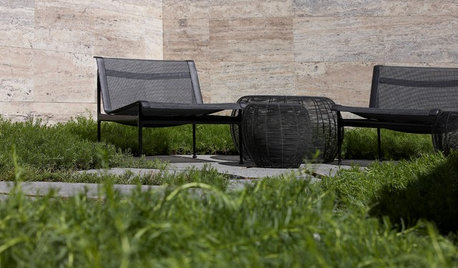Preparing lawn for fall overseed?
michael1022
11 years ago
Related Stories

LIFEHow to Prepare for and Live With a Power Outage
When electricity loss puts food, water and heat in jeopardy, don't be in the dark about how to stay as safe and comfortable as possible
Full Story
TRAVEL BY DESIGNHow to Prepare Your House for a Home Swap
Trading homes for your vacation? Leave yours in great shape for your guests and help them enjoy a happy break with these 12 tips
Full Story
GARDENING GUIDESHow to Prep Your Ground for a Healthy New Lawn
Seed or sod that falls on weedy, lumpy soil is a wasted effort. Follow these steps to ensure that your new lawn will thrive
Full Story
GARDENING GUIDESGive Your Turf the Fall Tune-up It Deserves
Treat your battered lawn to a little TLC this fall, and it will reward you with lush, healthy grass come spring
Full Story
GARDENING GUIDESHow to Plant a New Lawn From Seed
Choose from more grass varieties and save money over sod by starting your lawn from seed
Full Story
BEFORE AND AFTERSSee 6 Yards Transformed by Losing Their Lawns
Wondering whether a turf lawn is the best use of your outdoor space? These homeowners did, and they found creative alternatives
Full Story
FRONT YARD IDEASBefore and After: Front Lawn to Prairie Garden
How they did it: Homeowners create a plan, stick to it and keep the neighbors (and wildlife) in mind
Full Story
GARDENING GUIDESHow to Plant a New Lawn From Sod
Take the quick-start route to turf with sod; these installation guidelines will help ensure a healthy and long-lasting lawn
Full Story
LANDSCAPE DESIGNCalifornia Says Goodbye to the Sprawling Ornamental Lawn
New state rules will effectively limit turfgrass to 25 percent of the landscape in most new and renovated yards
Full Story
FLOWERS AND PLANTSMyoporum Parvifolium a Lush Green Alternative to the Lawn
Plant this Australian native in mild-winter climates as a low-maintenance, semi-drought-tolerant ground cover
Full StorySponsored
Central Ohio's Trusted Home Remodeler Specializing in Kitchens & Baths
More Discussions








dchall_san_antonio
michael1022Original Author
Related Professionals
Essex Landscape Architects & Landscape Designers · Tempe Landscape Contractors · Cary Landscape Contractors · Cordele Landscape Contractors · Cornelius Landscape Contractors · Lady Lake Landscape Contractors · Newberg Landscape Contractors · Peoria Landscape Contractors · Ringwood Landscape Contractors · Vashon Landscape Contractors · Yuba City Landscape Contractors · Irvington Landscape Contractors · Burleson Swimming Pool Builders · Las Vegas Swimming Pool Builders · Manassas Swimming Pool Buildersmichael1022Original Author
tiemco
dchall_san_antonio
tiemco
tiemco
michael1022Original Author
tiemco
michael1022Original Author
tiemco
michael1022Original Author
tiemco
michael1022Original Author
michael1022Original Author
tiemco
michael1022Original Author
nearandwest
grass1950
nearandwest
tiemco
michael1022Original Author
grass1950
michael1022Original Author
tiemco
michael1022Original Author
claga
tiemco
michael1022Original Author
claga
michael1022Original Author
michael1022Original Author
tiemco
michael1022Original Author
tiemco